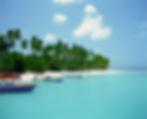A touch of whimsy to bolster not only your global financial education, but also your dinner party trivia! Yes - we are rocking Geek Chic with this post, but someone has to own it.

+ ANG - Netherlands Antilles Guilder +
The Netherlands Antillean guilder (Dutch: gulden) is the currency of Curaçao and Sint Maarten, which until 2010 formed the Netherlands Antilles along with Bonaire, Saba, and Sint Eustatius.
It is subdivided into 100 cents. Like many Caribbean currencies, the US dollar is the bench mark against which local currencies are pegged.

We love the Antilles Guilder because of its linguistic obscurity - who d0esn't love the Dutch...and we often forget that they were big players in the region throughout the 17 and 18th Centuries.
Much is made of financial imperialism and the stock-piling of reserve currencies. Our affection for ANG stems largely from the extent to which it is a reflection of a bygone era, a Pirates of the Caribeaneque tapestry of European colonial powers whose only remaining impression on these Islands tends to be random and largely globally useless currencies, customs & restrictions.
~ CHF - The Swiss Franc ~
CHF is the abbreviation for the Swiss franc, the official legal tender of Switzerland and Liechtenstein. CHF stands for Confoederatio Helvetica Franc, and Confoederatio Helvetica is the Latin name for the Swiss Confederation.

It is also legal tender in the Italian exclave Campione d'Italia.
The Swiss National Bank issues banknotes and the federal mint 'Swissmint' issues coins.
Before 1798, about 75 entities were making coins in Switzerland, including the 25 cantons and half-cantons, 16 cities, and abbeys, resulting in about 860 different coins in circulation, with different values, denominations and monetary systems.

The local Swiss currencies included the Basel thaler, Berne thaler, Fribourg gulden, Geneva thaler, Geneva genevoise, Luzern gulden, Neuchâtel gulden, St. Gallen thaler, Schwyz gulden, Solothurn thaler, Valais thaler, and Zürich thaler.
In 1798, the Helvetic Republic introduced the franc, a currency based on the Berne thaler, subdivided into 10 batzen or 100 centimes. The Swiss franc was equal to 6 3⁄4 grams of pure silver or 1 1⁄2 French francs.

So little is known about the Swiss banking structure.
As a currency we find it both charming and disturbing that Switzerland, literally the home of Cockoo-clocks and watches, retains 'Franc' within the name of it's tender. Globally, Switzerland's relationship reciprocity is anything but.
A point of interest - watches represented a means of transporting and moving valuable items across boarders (way back when).
-USD - United States Dollar.-


The United States dollar is the official currency of the United States and it's insular
territories per the United States Constitution since 1792.
For most practical purposes, it is divided into 100 smaller cent (¢) units, but is occasionally divided into 1000 mills (₥) for accounting purposes.

The Green-Back is the most liquid currency in the world.
By liquid we mean something akin to an actual liquid. Fluid, moving, mouldable and unrestricted. Pretty much anyone anywhere will accept USD...
So desirable is the currency (and so prevalent can forgery of it be) that in some countries like Myanmar, banks won't accept anything less than a pristine dollar bill. Money changers across Myanmar can be seen inspecting and then ironing US Bills before taking them to their local bank to exchange int o the local currency.
Other currencies that are not in such high demand are considering illiquid. Their global dissemination is limited.
This is largely a reflection of the size of the economy which underpins those currencies and, by extension, the demand for and proliferation of the USD is symptomatic of the scale and reach of it's economy...
We like the dollar not just because you can spend it anywhere, but also because the world macro currency soap opera tends to play out across the highs and lows of the currency and, despite being the legal tender of arguably the world's only super power, it's dissemination has served to shackle the US economy to the stock piling strategies and protectionist yet globalised approaches of other players on the world stage.
- BWP - Botswana Pula -

The pula is the currency of Botswana.
It has the ISO 4217 code BWP and is subdivided into 100 thebe.
Pula literally means "rain" in Setswana, because rain is very scarce in Botswana — home to much of the Kalahari Desert — and therefore valuable and a 'blessing'.
The word also serves as the national motto of the country.
The pula was introduced in 1976, replacing the South African rand at par. Despite a 12% devaluation in May 2005, the pula remains one of the strongest currencies in Africa
The word Pula also serves as part of the national motto of the Kingdom of Lesotho. As in Botswana, it means "rain" in the Sotho language and is considered a synonym for blessing.





